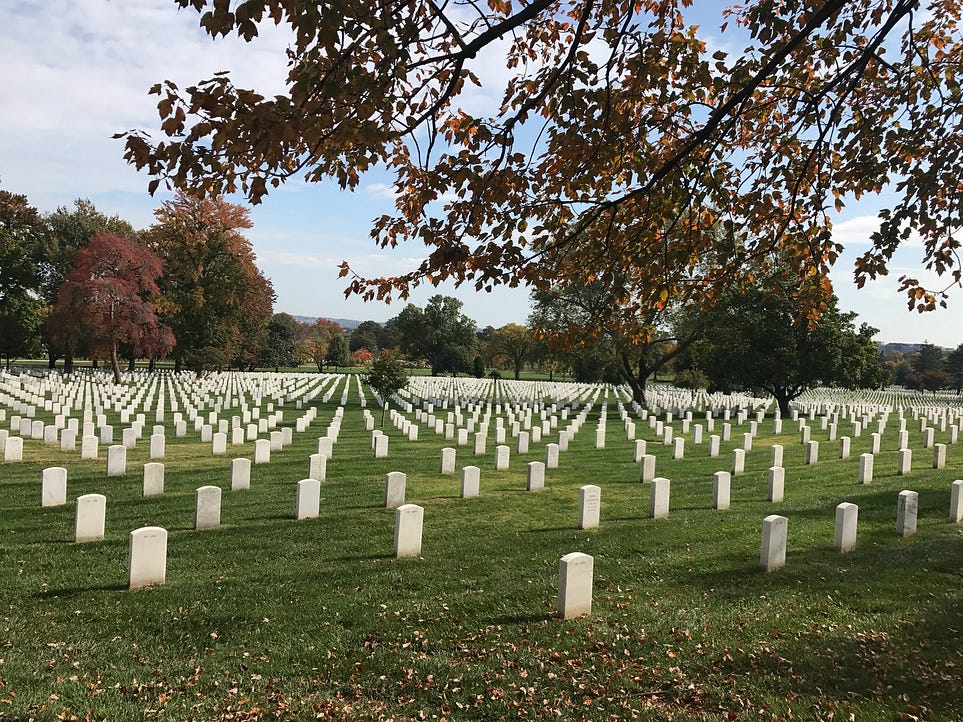[Part of a series, this essay explores a subheading from Chapter Eleven of Healing America’s Narratives: The Feminine, the Masculine, & Our Collective National Shadow. Now available.]

We’re returning to Chapter Eleven of Healing America’s Narratives after our departures in the previous two posts — the inevitability of the current state of the country and the apparent belief, shared by both Democratic and Republican leadership, that they need never-ending millions of advertising dollars in order to win elections and defeat each other (for the good of the country).
“I am going to die” is the fifth of six statements and questions that frame Chapter Eleven, which explores some approaches to manifesting the book’s title — Healing America’s Narratives. The statement is ‘simply’ an acknowledgment of what is — what’s true — that given enough time, we all die. No one knows how, when, or where, but with each breath we take, we get closer to our final breath.
Our responses to the some of the earlier questions and statements from Chapter Eleven inform how we might respond to this acknowledgment of our mortality. If who we think we are is simply an assembly of flesh, bone, instinct, thought, and mood — nothing but separate animated objects with a few shared traits and some noticeable differences — then the horrors of the histories of women, Native Americans, African Americans, the Vietnam War, the post-9/11 war on terror, and other significant histories, while still horrific, make sense in an ignorant, arrogant, fearful, bigoted, violent kind of way.
If, however, we all share an origin, a common ancestry — whether through a religious or a scientific story — and if we each have a unique ecological niche — our ultimate place in the world, our Soul, expressed through mythopoetic identity as a one-time-only manifestation of Spirit, All That Is, God, Source, Ground of Being — then it becomes a tad more difficult — it makes no sense at all — to proclaim the supremacy of any race, to declare you’re either with us or you’re with the enemy, or to in any way dehumanize others. The stories we choose about who we are, really, make a difference.
Each of us has our own dying and death stories. If we’re lucky we get to bury our parents and older siblings, our grandparents, aunts and uncles, and others from the generations that precede us. Some of these deaths, while sad, are expected and feel natural; sometimes they are unexpected and feel tragic. What is the story each of us tells, what is the story that you choose to tell, about the inevitability of death? As Mary Catherine Bateson told us, “The choice you make affects what you can do next.”¹
The late surgeon and author, Sherwin Nuland, wrote that death results “all too frequently [from] a series of destructive events that involve…the disintegration of the dying person’s humanity,” and that he had not “seen much dignity in the process by which we die.” Nuland, however, complemented his surgeon’s intimacy with the sterility, knowledge, precision, life, and death of the operating room with his philosopher’s view and his poet’s heart. “The greatest dignity to be found in death is the dignity of the life that preceded it,” he told us.²
If you want a dignified death, your best bet is to live a dignified life. If you want a dignified country, your best bet is live, and help others live, a dignified life by coming to terms with things as they are, being the change you want to see in the world, and at the very least, doing more good than harm through your words and actions.
_____
- Mary Catherine Bateson, “Composing a Life,” Sacred Stories: A Celebration of the Power of Stories to Transform and Heal. Eds. Charles & Anne Simpkinson, (HarperSanFrancisco, 1993), 42–43.
- Sherwin B. Nuland, How We Die, (Knopf, 1993), “all too frequently…,” xvii; “The greatest dignity…,” 242.




